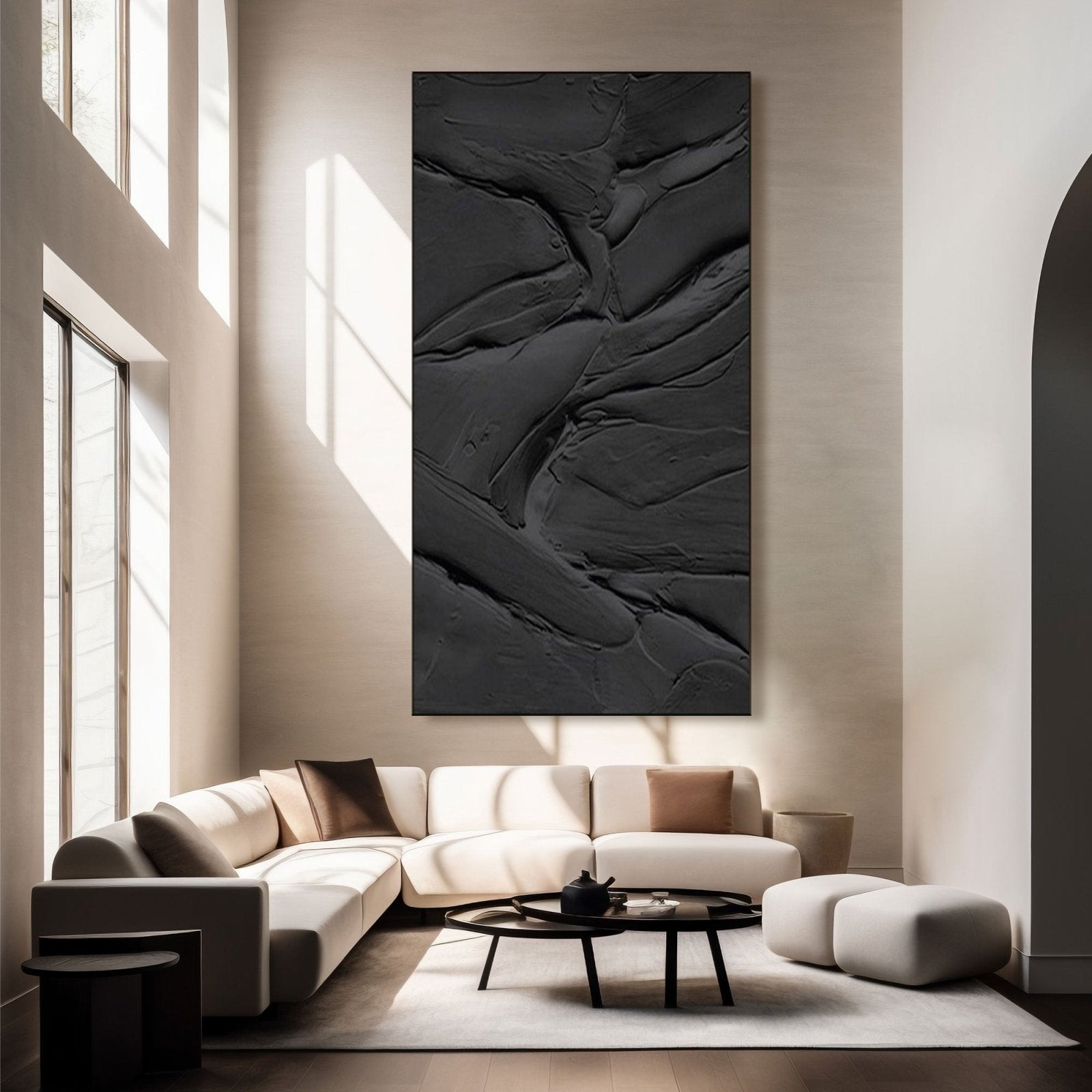
How to Clean Canvas Art Prints
Catalog:
- Introduction
- Identifying Your Canvas Type
- Description of Canvas Materials and Inks
- Factors affecting the cleaning process
- Pre-Cleaning Setup
- Simple Methods of Cleaning
- Handling Stubborn Stains
- Health Promotion and Proper Protocols
- Conclusion
Introduction
Canvas wabi sabi art prints has made waves with art enthusiasts by providing them a chance to beautify as well as capture the attention of their spaces with one-of-a-kind and spellbinding prints. The prints have a character of art expression and sturdiness, which makes them highly valued by different owners.
Nevertheless, it must be remembered that because these antiques are as valuable as other possessions, proper maintenance of them is a must to ensure that they will remain as long-lasting and beautiful as they were before. Nukeart, a leading provider of plaster on canvas, is unwavering in fulfilling both the artistic quality of its products and the durability of those it sells, through the crafting of enduring artworks.
In this article, we investigate the guidelines on cleaning canvas framing prints and we suggest tips and techniques that can help you keep these valuable pieces of artwork in good condition for many years.
Identifying Your Canvas Type
All canvas art prints may be printed on multiple materials, and use different kinds of inks, and, each of these printing methods would have corresponding peculiarities that would make cleaning processes unique to the specific materials.
The precise canvas type used in your artwork is a vitally critical factor that mostly controls which cleaning method is the most efficient and appropriate one to use. Let's dig into and tell you about varied textured canvas wall art and ink appearances usually utilized in canvas paintings by Nukeart artists and give recommendations on how to decide which type of canvas from Nukeart products is.

Description of Canvas Materials and Inks:
Canvas Materials:
- Cotton Canvas:Often liked by users because of its quality, it can be weathered and used for many purposes, it is a preferred choice for textured canvas art as it can paint in bright colors.
- Polyester Canvas:The polyester canvas offers an increase in the level of water resistance and stretching, which makes it the right choice for prints from higher-level traffic spaces or outdoor exhibitions.
Inks:
- Pigment-Based Inks:Through-colour-based inks promise long-lasting vibrancy and nondimming properties, making them more durable the colored
- Dye-Based Inks:Inks using dyes rather than pigments tend to give bright and colorful canvas, but they are prone to color fading, particularly when they are in contact with sunlight for long periods.
Guidance on Identifying Canvas Types:
- Check Product Specifications:Review the description of the product or the labeling provided by Nukeart to identify if the material and ink the artist used were canvas and ink.
- Feel and Texture:Concerning cotton vs. polyester, canvas made from these fabrics will inevitably show some variation in the texture. While cotton texture painting on canvas will be soft in hand, polyester will be smoother yet feel more synthetic.
- Color Saturation:If you take a look at the ink type used in the print, pigment-based dyes deliver an intense and vivid shade rather than regular dye-based dyes.
- Stretching and Resilience:Polyester fabric is load-bearing and also less likely to deform. On the other hand, cotton canvas contributes more to the vintage look of the sails.
To achieve this, you should gain a better knowledge of the materials and inks that canvas art wabi sabi in art is made of, as this will help you come up with a more effective method of cleaning these works of art that you value so much and you can be sure that the quality of the artwork won't be sacrificed in the process.
Factors affecting the cleaning process
Maintenance of the art prints includes a thorough examination of multiple aspects to prevent tarnish, by all means. With the knowledge of these aspects enders you will be able to choose the most suitable method of cleaning and try to keep the art object in proper condition. Here are some key factors to consider:
- Type of Canvas Material:Distinct canvases might include, among others, cotton or anise, which could call for specific cleaning methods, according to the various properties and susceptibility to moisture or cleaning agents present in every canvas.
- Type of Ink Used:The kind of equipment used helps to determine the type of cleaning. In the case of pigment-based ink, it can do the required cleaning, whereas dye-based requires different equipment. Most ink manufacturers of pigmented inks often boast that they usually consist of more colorful portrait fastness and durability than that of dye-based inks which can be bleached or bled more often by the chemicals in the cleaning juice than the other types of ink.
- The severity of Stains:The next factor indicating the roughness of the treatment is the nature and gravity of stains and dirt which will require an acidic approach at high concentration or other methods. Superficial littoral dirt can be removed physically enough to the point of necessary dryness, while stubborn stains would have to be washed out more deeply with more intensive wet cleaning techniques.
- Age and Condition of the Artwork: If you're handling an older canvas or one that has beenaffected by elements such as light, humidity, or pollution, you must exercise more careful hands during the cleaning process since this might lead to damaging or worsening what is already there.
- Framing and Mounting:Many artworks either have frames for stretched canvas or are mounted on a stretcher-bar which can then affect how easily or difficult it is to clean them. This can call for added care especially when cleaning the canvas to ensure that no damage is done to the stretcher or frame.
- Manufacturer's Recommendations:In the case of Nukeart's artwork, you have to follow the cleaning tips or suggestions given by the manufacturer. Observing this can help increase the durability of the art while maintaining any warranties or guarantees associated with the art at the same time.
Pre-Cleaning Setup
The preparatory measures to start cleaning your canvas art prints include putting yourself in a favorable state and bringing the required materials to the field. Follow these instructions to ensure a smooth pre-cleaning setup: Follow these instructions to ensure a smooth pre-cleaning setup:
- Clear the Area:Start by getting rid of the waste surrounding the artwork to create a free space for moving and cleaning without any discomfort.
- Gather Non-Abrasive Materials:Get soft stuff fiber clean which is non-abrasive type. These are generally the available supplies found in most households and are safely non-intrusive regarding art pieces' intrinsic value.
- Prepare the Cleaning Area:Ensure that you first place a clean, level surface where you can safely set the artwork while you're going on with the cleaning process. Steer clear of pavement that could drag your shoes sewn with metal pieces such as nuts or rivets. This can create scratches and marks on the canvas.
- Protect Surrounding Surfaces:If the colorful wall art is mounted on a wall, then you should keep some protective covers, like drop cloths or plastic sheets, beneath it to defend the surrounding surfaces from any debris or cleaning solutions.


Simple Methods of Cleaning
Primarily regimes of maintenance are central in retaining the first impression of cleanliness of canvas art arrivals and in the process of rubbing off the filth and the dirt. Follow these guidelines for safe and effective cleaning:
- Dusting Off Surface Debris:Brush the surface with a clean soft dry brush or cloth; make sure no marks are left afterward. It will be key in successfully eliminating loose debris which reduces the risk of scratching the canvas during the cleaning.
- Using Soft Brushes and Cloths: Use soft brushes and damp cloths that do not leave lint; these ensure destroyed canvas surfaces. On the other hand, these are painless yet powerful in removing thedust and dirt away from surfaces without any trace of residue left.
- Gentle Circular Motions:When operating the canvas cleaning tool, use soft circular motions so as not to burden the fibers or produce a more severe friction that could be injurious to the artwork. Attend to all the surfaces meticulously, to strive for perfection and give extra focus on the stains and prominent dirt.
These pre-cleaning setup guidelines that have been discussed above will help you prepare the artwork for cleaning and use the correct method which will ensure the kind yet proper maintenance of the beauty and integrity of your canvas prints.
Handling Stubborn Stains
The most stubborn stains of canvas art prints should be treated with extreme caution because any mistake g and so making the artwork look ugly. Follow these methods for effectively treating tougher stains while preserving the integrity of the canvas:
- Use Mild, Water-Based Cleaners:The fact that the dry cleaning method does not help to remove tough stains, some of which are even impossible to clean, you should try using mild water-based cleaners. For an average-sized load dilute some gentle detergent or soap in water to create the cleaning solution.
- Test Cleaning Solution:Performing a patch test before applying cleaning solution to the stained area of a canvas is vital; it must be conducted on an unnoticeable but small part of the canvas. Dunk a cloth (it must not be wet with soap or water) with a small amount of the solution and blot out the test area. Wait till the spot dries up completely and then check for any unfavorable consequences for the colorful flower art, ink, or canvas.
- Blotting Technique:Be sure not to use abrasive touches or scrub the stained area when removing the stain with the cleaning solution to avoid making the problem worse or damaging the canvas fibers. Contrary to that, use a soft dabbing with a fresh cloth or sponge to remove the stain from the material intending to forestall the situation without leaving behind some spots.
- Patience and Persistence:The tricky spots often will get rid of until the 2nd or 3rd treatment. They require you to take most softest of the stains before getting them all. Patiently and consistently fuel your efforts. Only careless saturation or unnecessary pressure will not be beneficial to your canvas. Overseeing is not advised because it damages our paintings.
- Rinse and Dry Thoroughly:When the spot is finally treated, you should then rinse off the affected area by wiping it out with clean water so that no remnant cleaner is left behind. Wipe away the spot with a dry cloth to drain away the moisture after that, allow time for it to get dry, and then return it to its original place.
Applying these approaches to the elimination of persistent stains on canvas art prints, you can be able to effectively refurbish the pictures and prolong their lifespan as well as beauty.

Health Promotion and Proper Protocols
To have your canvas prints presentable and long-lasting, you need to take preventive care and observe best practices.
- Handle with Care:In case of touching the surface of the canvas print, do not do it directly because your hands can transfer oils and dirt particles onto the canvas. On the other hand, if you have to hold the print, try the edges so that its surface may remain clean, or wear cotton gloves to do the same.
- Display Strategically:Put large canvas on low-traffic areas without direct sunlight exposure to prevent particles from clinging to them during frequent cleaning and prevent Opt for a sheltered area with a good ventilation system that is not in the way of foot or vehicle traffic.
- Regular Dusting:Install a scheduled dusting plan regularly with a soft brush or a microfiber cloth to remove the dust and debris from the surface. Performing just this easy action will help most to avoid the accumulation of dust and preserve the attractiveness of your work.
- Avoid Moisture Exposure: Protect your canvas prints from excess moisture and humidity by not displaying them in places that can be damp likebathrooms and kitchens. Too much moisture is a breeding ground for mold that destroys the canvas and the frame.
- Proper Storage: Make sure canvas prints are storedin a clean, cool, and dry space where they shall be kept away from excessive temperatures and humidity. Process prints instead of stacking or leaning them to prevent the warping or creasing phenomenon. Do this by using acid-free archival materials for packaging.
The above preventive care techniques and tips if followed will serve for the prints to stay in the best condition for years and that means less or no heavy-duty cleaning and preservation.
Conclusion
Keeping canvas art prints reflects their long-lasting popularity. Follow the outlined steps: choose the type of cloth, carry out the pre-cleaning work, perform the fundamental cleaning methods, remove the stubborn stains, and take preventive care.
Regular cleanings remove dust and other minor alterations. Discover the catalog of enduring canvas prints from Nukeart that carry the virtues of attentiveness and excellent craftsmanship to enhance your space with striking beauty. Create an overall positive ambiance by injecting the essence of each piece into the environment.




